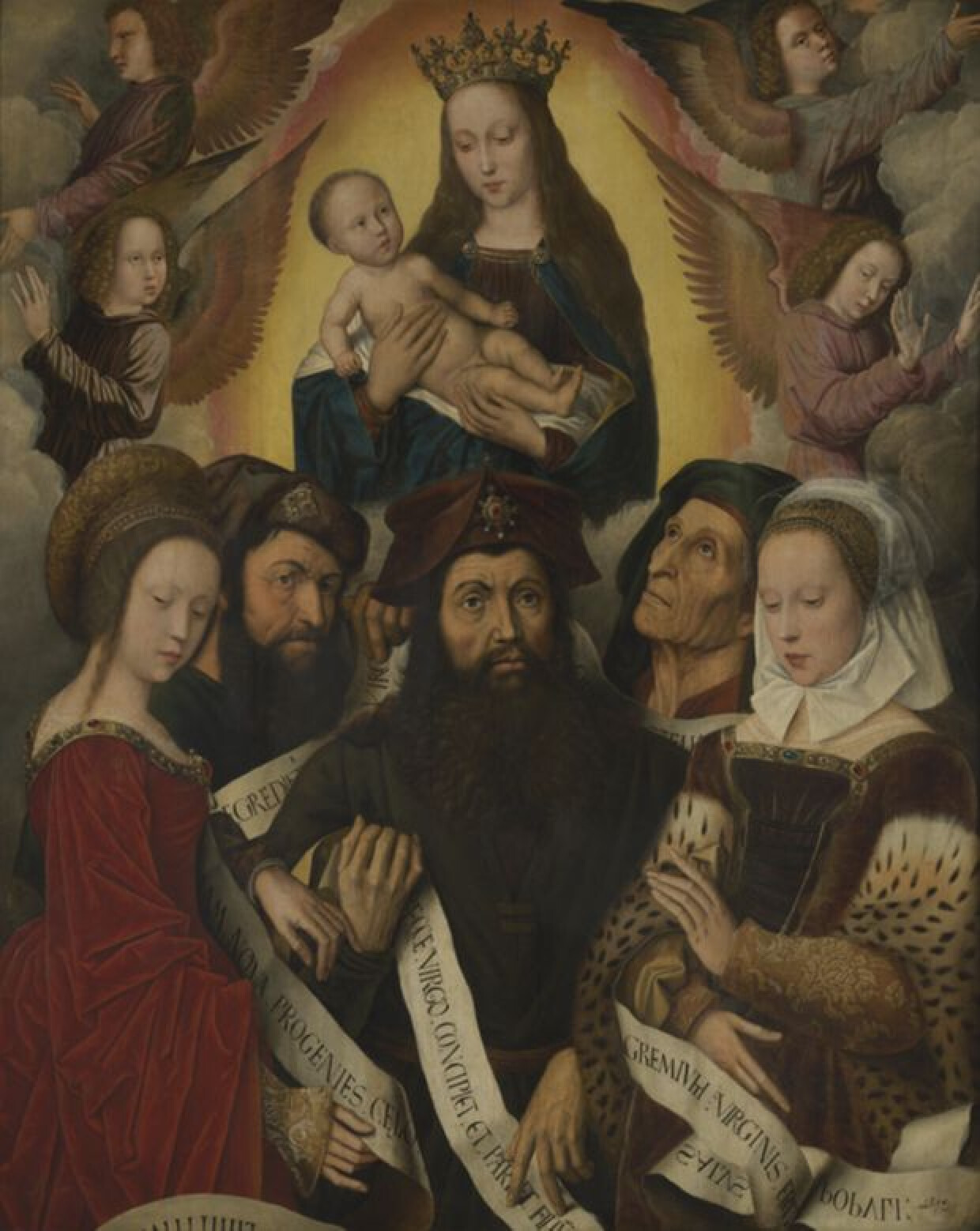Close
Manufacturer
Ambrosius BensonPeriod and date
16de eeuwThis painting is a key work in Ambrosius Benson’s oeuvre. In the nineteenth century, we did not yet know who had created this work. But a collection of stylistically similar works had already been compiled around this work, and is still largely accepted today. Only later could this collection be linked to Ambrosius Benson.
On the right, we see a sibyl, depicted as a demure woman. Her facial features are typical of Benson’s style; he often reuses his female figures in different guises: as an individual sibyl, as a reading Mary Magdalene or in larger compositions. The way Benson paints the clothing of his figures is also distinctive. A good example of this is the luminous folds of the red velvet dress worn by the prophetess on the far left.
MASTERPIECE
Intellectual and creative ownership of a design is a relatively modern concept. In the 16th century, the copying of great masters was the most normal thing in the world. In fact, it was actively encouraged among students – how else could one learn? But established artists, too, often took inspiration from the works of other masters, both their predecessors and contemporaries. Ambrosius Benson was no exception in this regard; the subjects and compositions of his paintings are frequently inspired by those of Gerard David, with whom he worked for a time in the studio. For Deipara Virgo, Benson may have drawn on Gerard David’s Virgo inter Virgines (ca. 1509), Jan Provoost’s The Glorification of the Virgin (1524), or most likely on a miniature in Simon Bening’s Flowers Book of Hours (1520-1525). This did not mean that a work was of lesser quality as a result; on the contrary, the ambition of artists was to imitate and surpass their predecessors. What do you think? Did Benson succeed in this case?
